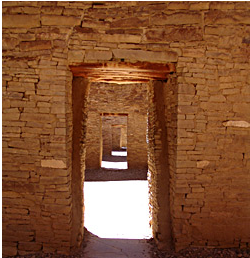Publication Date
5-1-2009
Abstract
Austronesian is one of the major language groups spoken. It is believed that Taiwan, Indonesian (east of Wallace line), or Bismarck Archipelago is the starting point for Austronesian migrations. It is also suggested that prehistoric cultures of Taiwan were established by the ancestors of the modern Taiwanese indigenous populations, who are also Austronesian speakers. The goals of this project are to estimate biological relationships of the San-Pau-Chu (SPC) to other Asian populations (especially Polynesians) and to evaluate if Taiwan indeed plays a major role in the history of Austronesian migrations by using both dental morphological data (metric and nonmetric dental traits) and genetic evidence. This dissertation is divided into six chapters. In chapter one, models of Austronesian dispersal are introduced. Additionally, hypotheses and significance of this study are emphasized. In chapter two, the linguistic, archaeological, osteological and genetic evidence for different models is reviewed. Chapter three provides a brief introduction to Taiwanese cultural history, and describes archaeological sites at the Tainan Scientific-Based Industrial Park. In chapter four, a case study of dental variation from the SPC, Wu-Chien-Tsuo South (WCTS), and Nan-Kang-Li East (NKLE) sites are presented. In chapter five, genetic diversity and maternal ancestry in the SPC people is evaluated by using ancient DNA. Finally, in chapter six the biological evidence of the SPC people and their affinities is summarized. This research is the first study in Taiwan trying to combine both morphological and genetic evidence to explore the biological nature of one prehistoric population. Because the dental morphological study and ancient DNA analyses seem to suggest a Northern Asian origin for the SPC people, it is proposed here that approximately 2,500 BP, some prehistoric Taiwanese came from mainland East Asia. However, the WCTS people, contemporaries of SPC, show a closer relatedness with the Namu from the Hawaii. Therefore, a multiple set of models must be considered. Studies with larger samples sizes and wider range of archaeological sites in the future will also help to gain insights.'
Keywords
Ancient DNA, Dental anthropology, San-Pau-Chu people
Project Sponsors
Graduate Research, Project, and Travel Grants from the University of New Mexico (2002) Chiang-Ching Kuo Foundation Dissertation Fellowships for ROC Students Abroad (2003) NSF Dissertation Improvement No. #0321795 (2003) DAAD Graduate Scholarship for Study and/or Research in Germany (2004) Wenner-Gren Foundation Dissertation Fieldwork Grants No. 7323 (2005-2006)
Document Type
Dissertation
Language
English
Degree Name
Anthropology
Level of Degree
Doctoral
Department Name
Anthropology
First Committee Member (Chair)
Anne Stone
Second Committee Member
Osbjorn M. Pearson
Third Committee Member
Illegible
Fourth Committee Member
Mark Stoneking
Fifth Committee Member
Cheng-Hua Tsang
Recommended Citation
Lin, Hsiu-Man. "The Biological Evidence of the San-Pau-Chu People and Their Affinities." (2009). https://digitalrepository.unm.edu/anth_etds/43

